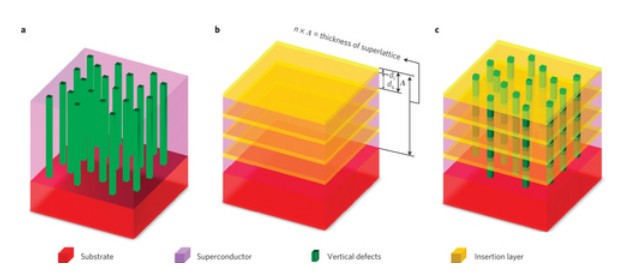

| Visitors Now: | |
| Total Visits: | |
| Total Stories: |

| Story Views | |
| Now: | |
| Last Hour: | |
| Last 24 Hours: | |
| Total: | |
Multilayer superconductors with tailored properties like improved current carrying capacity
From
Researchers have engineered a unique multilayer material that could lead to breakthroughs in both superconductivity research and in real-world applications. The researchers can tailor the material, which seamlessly alternates between metal and oxide layers, to achieve extraordinary superconducting properties — in particular, the ability to transport much more electrical current than non-engineered materials.
The new material also has improved current-carrying capabilities. As they grew the superlattice, the researchers also added a tiny bit of oxygen to intentionally insert defects every few nanometers in the material. These defects act as pinning centers to immobilize tiny magnetic vortices that, as they grow in strength in large magnetic fields, can limit current flow through the superconductor. “If the vortices move around freely, the energy dissipates, and the superconductor is no longer lossless,” says Eom. “We have engineered both vertical and planar pinning centers, because vortices created by magnetic fields can be in many different orientations.”
Eom sees possibilities for researchers to expand upon his team's success in engineering man-made superconducting structures. “There's a need to engineer superlattices for understanding fundamental superconductivity, for potential use in high-field and electronic devices, and to achieve extraordinary properties in the system,” says Eom. “And, there is indication that interfaces can be a new area of discovery in high-temperature superconductors. This material offers those possibilities.”
Nature Materials – Artificially engineered superlattices of pnictide superconductors
See more and subscribe to NextBigFuture at 2013-03-05 14:32:35 Source: http://nextbigfuture.com/2013/03/multilayer-superconductors-with.html
Source:



